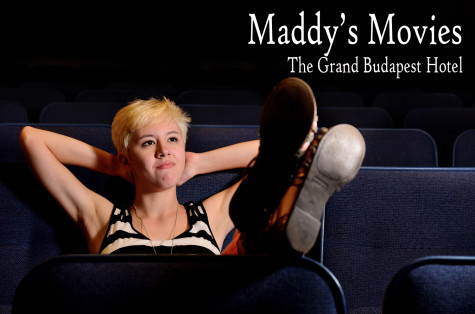“The Grand Budapest Hotel” is a delightful movie filled with subtle dark humor
 Funny, beautiful and very pink, “The Grand Budapest Hotel” is a classic Wes Anderson movie with perfectly symmetrical film shots, dark comedy and Bill Murray.
Funny, beautiful and very pink, “The Grand Budapest Hotel” is a classic Wes Anderson movie with perfectly symmetrical film shots, dark comedy and Bill Murray.
“The Grand Budapest Hotel” starts bogged down with a back story within a story within a story (and so on) but eventually tells the tale of friendship, love and a painting that really isn’t all that great (more on that later).
The beginning is not that important and too long to explain here. All you really need to know is the story that everyone paid money to see. It starts about 15 minutes into the film with Mr. Moustafa (F. Murray Abraham) telling a “Young Writer” (Jude Law) how he became the owner of a fine establishment — The Grand Budapest.
Mr. Moustafa tells the “Young Writer” about his humble beginnings as a young lobby boy. Zero (Tony Revolori), as he is known back then, trains at The Grand Budapest under the guidance of esteemed concierge M. Gustave (Ralph Fiennes). Gustave is on the rage with the wealthy clientele, especially with, as Mr. Moustafa describes,“rich, old, insecure, vain, superficial, blonde, needy women.”
When one of his lovely patrons, Madame D. (an unrecognizable Tilda Swinton), is murdered, it is discovered she has bequeathed a valuable painting, “Boy with Apple,” to Gustave in her will, much to the disappointment of her family members.
From there Gustave and Zero find themselves on the run from the law in an attempt to clear Gustave’s name of suspicion of murder for the valuable painting, all while fleeing the menacing assassin Jopling (a really scary Willem Dafoe) hired by Madame D’s entitled son Dmitri (Adrien Brody).
This film is really beautiful. From the very pink front of The Grand Budapest to the savory pastries that show up throughout the film, everything is made to look truly decadent, but not in an overwhelming way. The music isn’t loud and over-the-top, rather simple and stays in the background while various characters narrate the story.
Like all of Wes Anderson’s movies (“The Royal Tenenbaums,” “The Darjeeling Limited” and “Moonrise Kingdom”) the tone of the movie is seriously whimsical. Or maybe whimsically serious. There is a lot of humor, but it’s not executed how you would typically think. It’s subtle and dark — not so much in the characters’ actions, but in their dialogue and timing.
Ralph Fiennes is the best at this serious humor and his character is my favorite. It seems nothing can break that poised, European facade Gustave has. Everything always seems under control with him, except for a few moments where he loses it, which is pretty darn funny.
Lobby boy Zero is the perfect counter to Gustave’s nonchalantness. His faithfulness to Gustave and his love for Mendl’s pastry artist Agatha (Saoirse Ronan) makes Zero an endearing character to root for in the film.
The other famous cast members like Bill Murray, Owen Wilson, Edward Norton, Adrien Brody and Jason Schwartzman are all staples of Anderson’s films, but appear in it very briefly. I liked that. They were in the movie just long enough for you to say, “Oh look it’s…” but left in time for the audience to focus back on Gustave, Zero and Agatha who are the true stars of the film.
If you fear this movie to be a boring drama, it’s definitely not. There’s action with gunfights (where no one knows who’s shooting at whom) and a downhill ski/sled race that’s just adorable when seen from above (it’s like they used model figures or something). There is plenty of cursing and explicit images like a dead cat and old lady boobs (you’ve been warned).
I did not feel any of those moments took away from the film’s true meaning. Instead, they made the world of “The Grand Budapest Hotel” all the more real, no matter how pink that hotel was.
I give “The Grand Budapest Hotel” three in a half out of four pastries. Wes Anderson is back on the rise with his career and I can’t see what he comes out with next.










